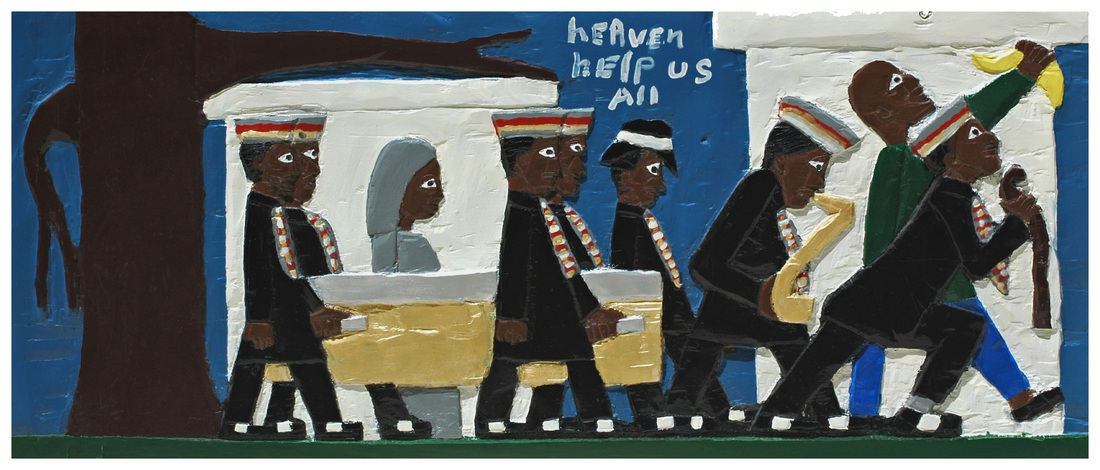VISUAL ART - ISSUE FIVE
Who Do We Trust
HERBERT SINGLETON
Curated by Gordon W. Bailey with an essay by Danielle Aykroyd
* * *

erbert Singleton was born in 1945, in Algiers, Louisiana, the 15th ward of New Orleans. He dropped out of high school, worked construction, and rode out a rough, early life on the street. He was shot twice, stabbed multiple times, and convicted of various drug-related offenses. Cumulatively, he spent nearly 14 years in Angola Prison.
In 1980, his sister and her unarmed boyfriend were killed during an unfounded police raid. She was shot through the door of the bathroom where she cowered, naked, in the bathtub, as white policemen tore up the apartment in search of a fugitive who was never there. The couple’s 4-year old son witnessed their murder and survived. Later, the police, seeking support for their invasion, pulled Singleton off the street to extort a confession from him for a crime he hadn’t committed. By all accounts, he was tortured: nearly suffocated with a plastic bag, beaten within an inch of his life, and left hospitalized for several weeks.
In the words of his friend, noted scholar, and collector, Gordon W. Bailey, “Singleton wore the scars of adversity without complaint and overcame many hardships—some compounded by his own misdeeds.” Yet, from this trial by fire, he emerged to create a remarkable body of work. From the all too common thread of his biography, he created an uncommon visual chronicle of personal and collective struggle. His carvings offer a stunning portrait of empowerment through artistic expression.
(Excerpt from Danielle Aykroyd's essay Who Do We Trust)
(Photos by Gordon W. Bailey)
(Photos by Gordon W. Bailey)

The late artist’s passionate works are celebrated worldwide and held in many important collections including Collection de l’Art Brut, the High Museum of Art, The Los Angeles County Museum of Art, and the Smithsonian American Art Museum.




